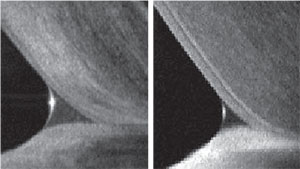Found these tips are very useful
Experts offer top allergy tips - Nov. 9 2017
particularly interesting parts:
Art Epstein, Phoenix
''Allergy also increases surface inflammation. This can worsen the misery of dry eye.
Treating both at the same time can be prudent.''---- Now I know such approach is important - my strategy: avoid triggers
Michael Cooper, Willimantic, CT----We better tell doctors these as most doctors do not ask.
''Never forget that the allergy season is year round. As part of our battery of questions,
we always ask patients if their allergies are spring, fall, a combination, or perennial.
...so I ask how much mold is present in their houses to gauge whether this may have an impact on allergy status.''
Michael Raizman, MD Boston
1.Encourage your patients not to rub their eyes. Eye rubbing brings allergens from the hands to the face and eyes.
Rubbing also mechanically degranulates mast cells in the lids and conjunctiva and contributes to ocular inflammation and swelling.
2. Remind patients when they come in from outdoors on a day with high pollen counts to wash their faces and hands, brush or comb their hair, and change their clothes.
3. Artificial tears that are chilled in the refrigerator feel especially good when applied to an itchy, irritated eye.
Cooling the ocular surface may reduce inflammation and discomfort as well.
Len Koh, OD, PhD Spokane, WA
1. Avoid allergens.
Pollen: Pay attention to pollen counts; they are highest in mid-morning and early evening.
Mold: Keep humidity low (30 to 50 percent) to prevent mold growth with dehumidifier use as needed. Clean high-humidity areas, basements, bathrooms, and kitchens regularly.
Dust: Use allergen-reducing covers for bedding. Wash bedding frequently in hot water temperatures >130° F to kill dust mites. Use damp mop or rag instead of dry dust mop or broom to trap allergens.
Milton M. Hom, Azusa, CA
1. Watch the weather. We have found that high temperatures combined with high humidity and high pollen counts are allergy triggers. Keep watch on the weather forecast to predict the big allergy days.
2. Asthma is a red flag for allergy and allergic conjunctivitis. We know that the eye (allergic conjunctivitis) and nose (allergic rhinitis) are connected, but do we think about the other direction to the lungs? Its all about the entire airway, not just one part. If you see asthma, think of rhinitis and ocular allergy.
3. Look at the plant life around you. Most seasonal allergies are due to pollen, and pollen comes from plants. If allergies are bothering your patients, have them look around their environment for flowering plants or pollen anthers. A tree or plant can be perfectly quiet in terms of allergy when not flowering. But when the flowers appear, pollen Armageddon happens. Beware the anthers.
http://www.optometrytimes.com/allerg...p-allergy-tips
Experts offer top allergy tips - Nov. 9 2017
particularly interesting parts:
Art Epstein, Phoenix
''Allergy also increases surface inflammation. This can worsen the misery of dry eye.
Treating both at the same time can be prudent.''---- Now I know such approach is important - my strategy: avoid triggers
Michael Cooper, Willimantic, CT----We better tell doctors these as most doctors do not ask.
''Never forget that the allergy season is year round. As part of our battery of questions,
we always ask patients if their allergies are spring, fall, a combination, or perennial.
...so I ask how much mold is present in their houses to gauge whether this may have an impact on allergy status.''
Michael Raizman, MD Boston
1.Encourage your patients not to rub their eyes. Eye rubbing brings allergens from the hands to the face and eyes.
Rubbing also mechanically degranulates mast cells in the lids and conjunctiva and contributes to ocular inflammation and swelling.
2. Remind patients when they come in from outdoors on a day with high pollen counts to wash their faces and hands, brush or comb their hair, and change their clothes.
3. Artificial tears that are chilled in the refrigerator feel especially good when applied to an itchy, irritated eye.
Cooling the ocular surface may reduce inflammation and discomfort as well.
Len Koh, OD, PhD Spokane, WA
1. Avoid allergens.
Pollen: Pay attention to pollen counts; they are highest in mid-morning and early evening.
Mold: Keep humidity low (30 to 50 percent) to prevent mold growth with dehumidifier use as needed. Clean high-humidity areas, basements, bathrooms, and kitchens regularly.
Dust: Use allergen-reducing covers for bedding. Wash bedding frequently in hot water temperatures >130° F to kill dust mites. Use damp mop or rag instead of dry dust mop or broom to trap allergens.
Milton M. Hom, Azusa, CA
1. Watch the weather. We have found that high temperatures combined with high humidity and high pollen counts are allergy triggers. Keep watch on the weather forecast to predict the big allergy days.
2. Asthma is a red flag for allergy and allergic conjunctivitis. We know that the eye (allergic conjunctivitis) and nose (allergic rhinitis) are connected, but do we think about the other direction to the lungs? Its all about the entire airway, not just one part. If you see asthma, think of rhinitis and ocular allergy.
3. Look at the plant life around you. Most seasonal allergies are due to pollen, and pollen comes from plants. If allergies are bothering your patients, have them look around their environment for flowering plants or pollen anthers. A tree or plant can be perfectly quiet in terms of allergy when not flowering. But when the flowers appear, pollen Armageddon happens. Beware the anthers.
http://www.optometrytimes.com/allerg...p-allergy-tips


Comment